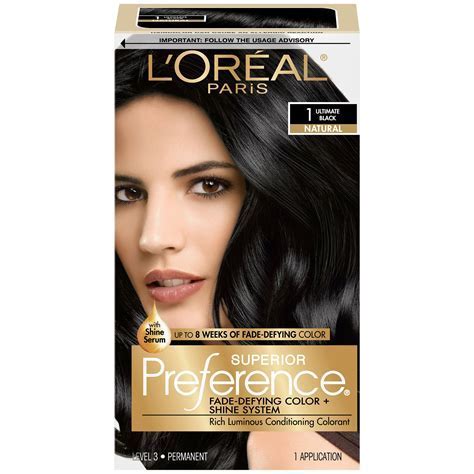Introduction
Black No. 1 dye, also known as Sudan I, is a synthetic azo dye that has been widely used in various industries, including textiles, plastics, and food. Despite its popularity, concerns have been raised about its potential health risks, leading to its ban in many countries. This article delves into the characteristics, applications, and safety concerns surrounding Black No. 1 dye.

Characteristics of Black No. 1 Dye
Black No. 1 dye is a dark brown or black powder with a molecular weight of approximately 352 g/mol. It is soluble in most organic solvents, including methanol, ethanol, and chloroform, but is insoluble in water.
Applications of Black No. 1 Dye
Black No. 1 dye has been extensively used in various industries due to its intense color and low cost. Its applications include:
Textiles
Black No. 1 dye is primarily used in the textile industry to color cotton, wool, silk, and other fabrics. It produces a deep, black color that is resistant to fading and washing.
Plastics
Black No. 1 dye is also used in the plastics industry to color various plastic products, including toys, containers, and electronic components.
Food
In the past, Black No. 1 dye was used to enhance the color of food products, such as chili powder, paprika, and curry powder. However, due to safety concerns, its use in food has been banned in many countries.
Safety Concerns
Concerns about the safety of Black No. 1 dye arose from studies that linked its consumption to the development of cancer in laboratory animals. The World Health Organization (WHO) has classified Black No. 1 dye as a Group 3 carcinogen (possibly carcinogenic to humans).
Ban on Use
In light of the safety concerns, Black No. 1 dye has been banned from use in food in many countries, including the United States, the European Union, and Canada. In addition, its use in textiles and plastics has also been restricted in some regions.
Alternatives to Black No. 1 Dye
Due to the safety concerns surrounding Black No. 1 dye, alternative azo dyes have been developed for use in textiles, plastics, and other industries. These alternatives include:
Solvent Black 3
Solvent Black 3 is a black azo dye that is often used as a replacement for Black No. 1 dye in textiles. It has similar dyeing properties but is considered safer for human health.
Disperse Black 9
Disperse Black 9 is another black azo dye that is used in the textile industry. It is more resistant to fading and washing than Solvent Black 3.
Natural Dyes
Natural dyes, such as logwood and madder, can also be used to achieve black colors in textiles. Natural dyes are generally considered safer than synthetic dyes.
Tips and Tricks for Using Black No. 1 Dye
Despite its potential health risks, Black No. 1 dye is still used in some limited applications. If you are using Black No. 1 dye, it is important to take the following precautions:
Wear Protective Gear
Always wear gloves, a mask, and eye protection when handling Black No. 1 dye.
Ventilate the Area
Ensure the area where you are working is well-ventilated.
Avoid Skin Contact
Avoid prolonged skin contact with Black No. 1 dye. If skin contact occurs, wash the affected area thoroughly with soap and water.
Follow Instructions Carefully
Always follow the manufacturer’s instructions when using Black No. 1 dye.
Common Mistakes to Avoid
When using Black No. 1 dye, it is important to avoid the following mistakes:
Using Too Much Dye
Using too much Black No. 1 dye can result in a darker color than desired.
Not Mixing the Dye Properly
Thoroughly mix the Black No. 1 dye with a solvent before using it.
Not Rinsing the Fabric Thoroughly
Rinse the fabric thoroughly after dyeing to remove excess dye.
Not Drying the Fabric Properly
Properly dry the fabric to prevent fading and bleeding.
Conclusion
Black No. 1 dye has been widely used in various industries, but safety concerns have led to its ban in many countries. While alternatives to Black No. 1 dye are available, it is important to take precautions when using this dye to minimize potential health risks. By following the tips and tricks outlined in this article, you can safely use Black No. 1 dye for your projects.
Additional Information
Table 1: Physical and Chemical Properties of Black No. 1 Dye
| Property | Value |
|---|---|
| Molecular Weight | 352 g/mol |
| Melting Point | 126-128°C |
| Boiling Point | 420°C |
| Solubility in Water | Insoluble |
| Solubility in Organic Solvents | Soluble |
Table 2: Applications of Black No. 1 Dye
| Industry | Application |
|---|---|
| Textiles | Coloring cotton, wool, silk, and other fabrics |
| Plastics | Coloring toys, containers, and electronic components |
| Food | Enhancing the color of chili powder, paprika, and curry powder |
Table 3: Safety Concerns and Precautions
| Concern | Precautions |
|---|---|
| Potential Carcinogenicity | Wear protective gear, ventilate the area, avoid skin contact |
| Toxicity | Follow instructions carefully, avoid using too much dye, rinse the fabric thoroughly |
Table 4: Alternatives to Black No. 1 Dye
| Alternative | Advantages |
|---|---|
| Solvent Black 3 | Safer for human health |
| Disperse Black 9 | More resistant to fading and washing |
| Natural Dyes | Generally considered safer than synthetic dyes |
